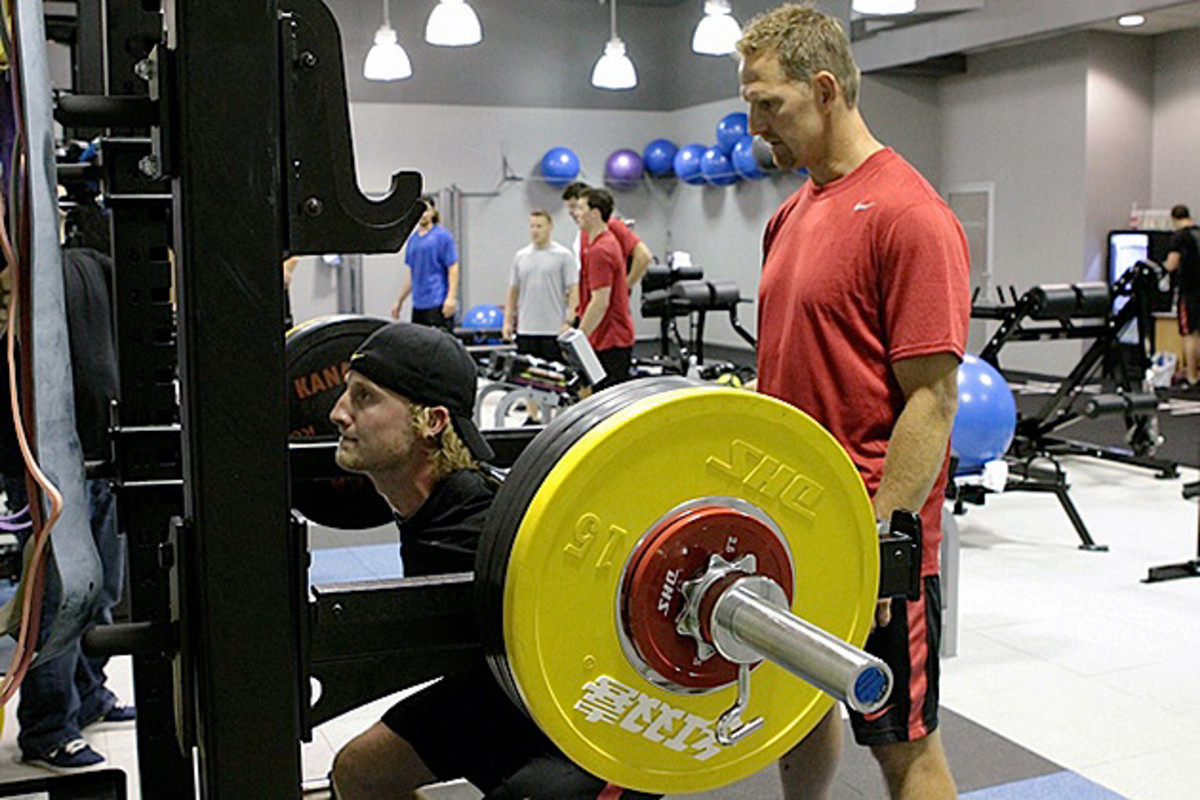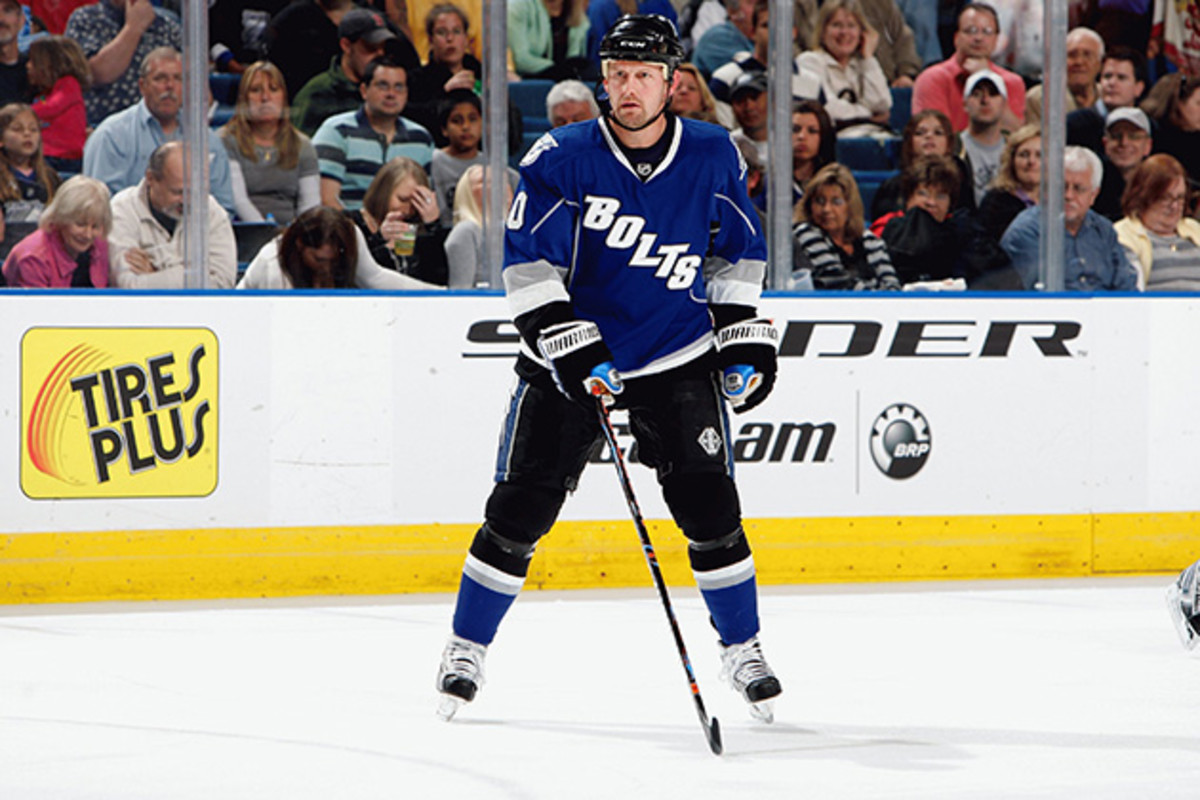Gary Roberts Q&A: Talking with one of hockey's most revered trainers

In his 21 seasons with the National Hockey League, Gary Roberts was known for his style of play: tough and rough. His grueling on-ice presence, combined with crushing physical ability, left opponents knowing that Roberts was a bodily threat if they dared to enter his orbit. Roberts was a specimen of muscular health.
But in 1996, after years of intense play, Roberts developed bone spurs and nerve damage in his neck, limiting his arm function. He underwent two surgeries to relieve the nerve impingement to regain full use of his upper extremities, but his return to the NHL was doubtful.
“After the surgeries, I had hoped to be able to live a normal and active life, but I never thought I would play competitive hockey again,” Roberts tells SI.com. “Fortunately for me, I was put in touch with experts who used cutting-edge techniques to help me become strong enough to play again.”
Yes, play again—for 13 additional seasons prior to his retirement in March 2009 at age 43.
Since he retired, Roberts has combined his experiences with his own injury and rehabilitation and love for cutting-edge strength and conditioning to become one of the most respected and well-known physical training experts in the NHL and amateur hockey today. In 2011, Roberts officially founded the Gary Roberts High Performance Training Centre in North York, Ontario.

“The GRHPT is the philosophy I developed through my own personal experiences as a player in the NHL,” says Roberts, who played for the Calgary Flames, Carolina Hurricanes, Toronto Maple Leafs, Florida Panthers, Pittsburgh Penguins and Tampa Bay Lightning.
“What I realized in the last few years of my career, as an older player, is that I really enjoyed working with the younger players to try and help them prepare to play—and hopefully avoid some of the challenges I faced over the years.”
Roberts talked with SI.com about some of those challenges and what his experiences in the NHL have taught him.
SI.com: Tell me about the Gary Roberts High Performance Training Center
Gary Roberts: The GRHPT is an integrated approach to achieve peak performance in sport, particularly hockey. It brings together three critical components—customized training, proper nutrition and recovery strategies that, when combined in specific ways, help optimize athletic performance.
Behind the Body: Tampa Bay Lightning's center Steven Stamkos
SI.com: How has strength and conditioning evolved in the NHL?
GR: I believe the importance of strength training and speed work has increased—the game is faster now, so you need to be able to skate well in order to play. … It used to be more endurance-based with a focus on your max VO2. Too much endurance training hinders progress in strength training and can actually make you slower.
SI.com: What strength training approach do you take with new trainees?
GR: I believe in customized training for each individual player that is developed with the insight from substantial testing. That training needs to be supported with proper nutrition and appropriate recovery measures.
SI.com: What areas of nutrition do you stress in your training programs?
GR: Proper nutrition is absolutely critical—it’s what supports recovery and fuels progress. But it’s not only about eating a variety of nutritious food—it’s about what to eat and when to eat it.”

SI.com: What are your thoughts on dietary supplementation?
GR: I don’t believe in a lot of dietary supplementation. What I think is critical is eating nutritious whole foods. However, I do take some supplements that I consider important like vitamin C, vitamin D, magnesium, omega 3 oils and probiotics.”
SI.com: What's the appropriate age for hockey athletes to begin participating in a strength and conditioning program?
GR: Around 14 years of age, which is typically when they are physically mature enough to do strength and resistance training. They need to begin preparing to play in leagues, like junior hockey leagues, where they will play against 16- to 20-year olds.”
Tech Talk: How the NHL is using Catapult technology to reduce injuries
SI.com: Who are some of the most memorable athletes you've trained?
"[Steven Stamkos], an extremely talented hockey player; he is also very dedicated in how he prepares to play and professional in how he approaches the game. [Connor McDavid] is very similar [to Stamkos]—extremely talented and very dedicated to his preparation. I expect he will enjoy the same kind of success in the NHL as Stamkos.”
“[Hodgson's] another player I have worked with for a long time who is very dedicated to how he prepares to play. He stands out because his preparation was very complicated as he persevered through injury early in his career. He had to be patient and cautious, and stay the course, which he did.”
SI.com: What was your training regimen like during your NHL career?
GR: In the first part of my career, up until my neck injuries, I spent a higher percentage of time focusing on endurance training and less time on strength training—that wasn’t optimal for me to support the kind of game I played. … In the second half of my career, after my neck surgeries, I changed all aspects of my preparation. My training focused more on power with heavier resistance training, along with agility, explosiveness and speed training.”
SI.com: How has that changed today?
GR: My focus now is on maintaining mobility and strength—ex-hockey players can seize-up pretty quickly. I still do a significant amount of strength training, but not with as heavy resistance as when I was playing. I also continue to do agility and speed work.”
SI.com: What advice do you have for athletes trying to excel in hockey?
GR: Success in hockey requires an ongoing commitment to an integrated program that includes customized training, proper nutrition and recovery.
